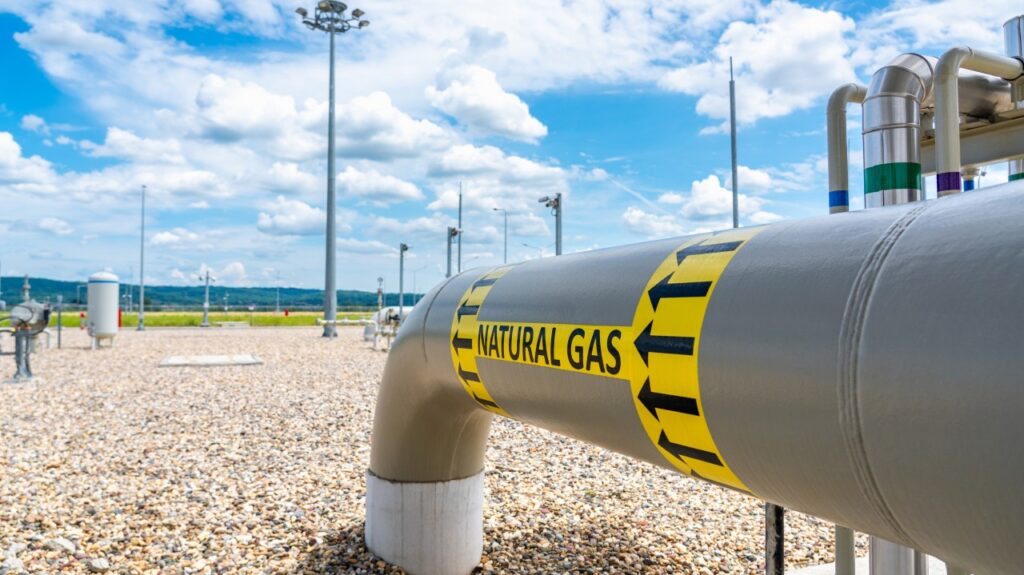[datacenter_tag_image]


Data centers depend on reliable, continuous power to ensure uninterrupted operations, making energy infrastructure a key consideration during site selection. Proper due diligence must begin well before land is purchased. Confirming that sufficient energy is available—both in terms of capacity and reliability—should be a priority during the site selection process. This includes collaborating with gas utility partners to verify pipeline capacity, understanding local energy regulations, and ensuring that the selected utility can meet the long-term energy needs of the data center. At Enchanted Rock, we have developed a well-established model for conducting this type of research, leveraging decades of experience and strong relationships with natural gas utilities and pipeline operators.

As the power grid becomes more constrained, hyperscalers need to take charge of their power needs. In this article, I will explore each of the steps and why they matter to hyperscalers.
Operational gas supply requirements
A crucial consideration is understanding the gas supply needs during both bridge and backup power modes. Prime power scenarios demand a consistent and reliable natural gas supply to serve as the primary energy source, often for extended periods. Bridge power, on the other hand, requires a flexible approach, ensuring power continuity while transitioning to grid connectivity. At Enchanted Rock, we provide electricity generation solutions tailored to both of these operational profiles.
Equally important is the transition from prime power to backup power. Once the prime (bridge) power requirement ends, our systems seamlessly transition to the backup power mode, where generators operate only during power outages to the electrical grid. This shift introduces a critical change in gas demand, requiring firm, no-notice gas supply to ensure uninterrupted operations. Our expertise in managing these transitions enables us to anticipate and address the varying gas supply needs, providing hyperscalers with confidence in both the reliability and adaptability of their power systems.
Natural gas infrastructure research
Natural gas infrastructure research begins with evaluating the distance to the nearest pipeline, as proximity can significantly impact both project feasibility and costs. Additionally, the pipeline must be assessed to ensure it has the capacity to meet the operational demands of the data center. It is also critical to determine whether the pipeline is part of an intrastate or interstate network, as this affects regulatory requirements and potential supply arrangements. Finally, pipeline type must be determined—whether it is used for distribution, transmission, or gathering.
As part of this effort, we are personally collaborating with several gas producers across the US to create heat maps of their pipeline systems. These maps help identify areas of robust capacity within their networks, providing another valuable resource for customers seeking to pinpoint the right locations for development. This collaborative initiative has proven to be an effective tool for guiding clients toward strategic land acquisitions and ensuring that energy infrastructure aligns with their operational needs.
Proximity to suitable pipelines
One of the most significant considerations for hyperscalers is the proximity to natural gas pipelines that have sufficient capacity to meet demand without compromising supply to other customers. To use natural gas on a large-scale commercial site, proximity to a pipeline is a starting point, but several other physical characteristics of the pipeline are critical to ensure feasibility and efficiency. The hyperscale site’s equipment must align with the operating pressure of the pipeline needs to align with the requirements of the site’s equipment, and the size of the pipeline will affect its capacity to transport natural gas to meet the site’s demand. Additionally, a robust and reliable pipeline network with redundancy will ensure a consistent supply, especially if there are maintenance or emergency disruptions.
Firm capacity agreements with backup solutions
It is not enough to simply confirm the presence of a pipeline. Hyperscalers must ensure that the gas capacity available is firm and not interruptible. Interruptible capacity, while often more affordable, is subject to curtailment during high-demand periods, particularly as gas utilities prioritize residential customers to maintain system integrity. This means that without firm capacity agreements in place, data center operations could face disruptions during peak energy demand or extreme weather events.
However, in cases where firm gas capacity isn’t available, integrating onsite propane as a backup fuel option provides a practical and reliable solution. Onsite propane storage can bridge the gap during periods of curtailment, ensuring uninterrupted operations even when natural gas supply is constrained. By combining interruptible natural gas capacity with onsite propane reserves, hyperscalers can effectively mitigate the risks associated with pipeline disruptions while maintaining the operational reliability required for critical infrastructure like data centers. This hybrid approach ensures flexibility and resilience, even in the most demanding conditions.
Environmental considerations
Natural gas provides a superior solution for onsite power generation compared to diesel, which has traditionally been used for backup power. While diesel generators are capable of providing temporary power, they come with significant drawbacks. Diesel generators emit higher levels of greenhouse gases and particulate matter, contributing to environmental concerns that conflict with many hyperscalers’ sustainability commitments. Additionally, diesel relies on supply chains that can be disrupted during natural disasters, making it less reliable for extended outages. In contrast, natural gas offers cleaner emissions, greater reliability, and a stable supply, positioning it as a more sustainable and dependable choice for both prime and backup power needs.
The right process to secure the power you need
Our natural gas team’s experience collectively spans over 50 years in the gas industry, and that has provided us with a strong foundation for conducting this type of capacity research. We have worked closely with natural gas producers and marketers across the US, gaining valuable insights into where gas capacity is most prevalent. This background enables us to identify opportunities and challenges that might not be immediately apparent, ensuring a comprehensive approach to site selection and energy planning. We view this as a tool that enhances the quality of our work and provides meaningful value to the hyperscalers and other stakeholders we support.
By considering these factors—proximity to pipelines, firm capacity agreements, operational gas supply requirements, and the importance of thorough natural gas infrastructure research—hyperscalers can position themselves for success in a challenging energy environment. Building data centers near robust natural gas infrastructure ensures not only operational reliability but also aligns with broader goals of sustainability and resilience. As the energy landscape continues to evolve, strategic planning and informed decision-making will be the keys to unlocking long-term growth and reliability for hyperscalers.
This article was originally published on LinkedIn.